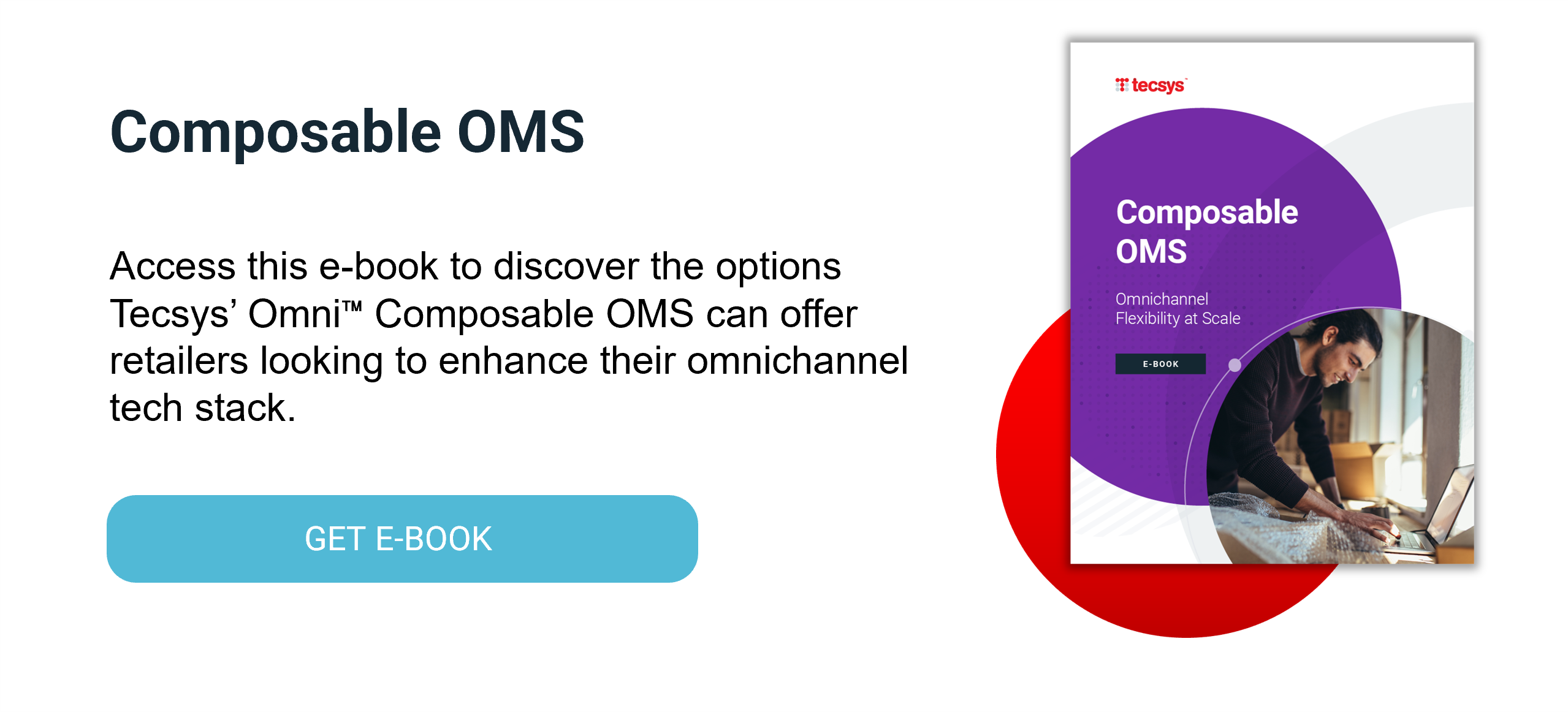5 Compelling Reasons for Retailers to Choose a Composable Order Management System

As digital transformation continues to revolutionize the retail landscape, organizations are seeking solutions that are both agile and adaptive to changing customer expectations. One such solution is the composable order management system (OMS).
So, what exactly is a composable OMS? Simply put, it’s a flexible, modular approach to order management that allows businesses to build their own unique systems by selecting and combining the components that best meet their needs. A composable OMS can help you to effectively advance your omnichannel strategy, no matter what retail systems you have in place or what your current business processes are. It provides a flexible, value-driven OMS that can adapt to any retail tech stack to provide a frictionless commerce experience to customers that is scalable and extensible.
Here are five compelling reasons why a retail organization should consider a composable order management system as part of their digital transformation project.
1. Scalability
As your retail organization grows, it's imperative that your systems can scale with you. A composable OMS allows you to select, combine and scale the components you need without disrupting your operations. This means you can easily add new features or expand your system’s capabilities as your business grows or changes.
2. Flexibility
Unlike a traditional OMS, which often comes as a one-size-fits-all solution, a composable OMS provides a greater degree of flexibility. You can pick and choose the components that align with your business processes, thereby creating a bespoke system that reflects your unique operational needs.
3. Speed to Market
In the fast-paced retail industry, speed is of the essence. A composable order management system enables faster deployment of new services and quicker response to changes in the market or customer behavior. You can introduce new functionalities or make modifications to your system swiftly, without undergoing time-consuming system overhauls.
4. Reduced Operational Costs
A traditional OMS often requires substantial resources for maintenance and updates. With a composable OMS, each module operates independently, thus minimizing the impact of changes or additions on the whole system. This can lead to significant cost savings in terms of maintenance and upgrades.
5. Improved Customer Experience
At the heart of every retail organization is the customer. With a composable OMS, retailers can deliver superior customer experiences by seamlessly integrating various touchpoints like online, in-store and mobile shopping. This provides a consistent and personalized shopping experience, enhancing customer satisfaction and loyalty.
Staying Competitive in an Evolving Market
Implementing a composable OMS during your digital transformation project allows your retail organization to keep up with evolving market dynamics and customer preferences. Not only does it offer scalability, flexibility and cost savings, it also positions your business for future growth and innovation.
Digital transformation is not just about implementing new technologies; it's about reshaping your business to be more customer-centric, agile and resilient. By considering a composable order management system, retail organizations can turn their digital transformation project from a daunting task into an exciting opportunity for growth and improved customer experience. Remember, in the new era of retail, adaptability is key to staying competitive and relevant.

